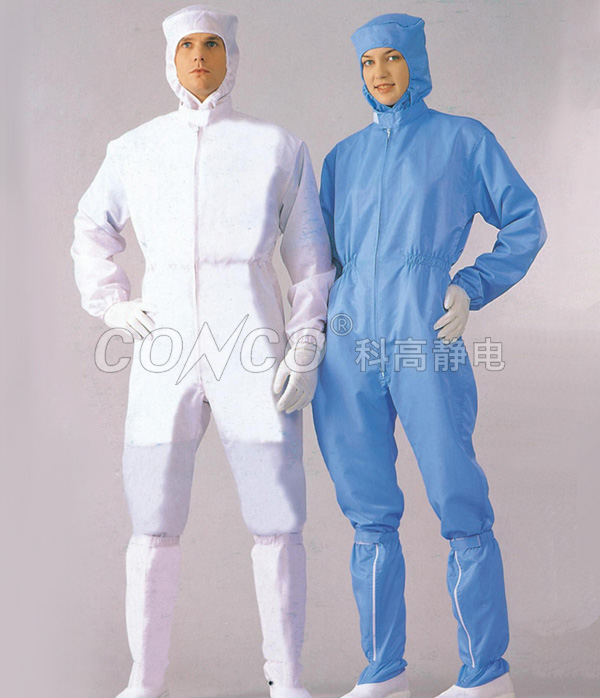

1. Basic principles of electrostatic protection a. Rest […]
1. Basic principles of electrostatic protection
a. Restrain the accumulation of static charge; b. Eliminate the static charge that has been generated quickly, safely and effectively.
Second, the anti-static work area
1. Floor materials a. It is forbidden to directly use wooden floors or to lay wool, linen, chemical fiber carpets and ordinary floor leather. b. The ground made of electrostatic conductor material should be selected, such as anti-static raised floor or anti-static floor mat on ordinary ground, and effectively grounded. c. It is allowed to use specially treated terrazzo floor, such as laying ground wire network in advance, carburizing or spraying antistatic agent on the floor.
2. Grounding a. The anti-static system must have an independent and reliable grounding device. The grounding resistance should generally be less than 10Ω. The embedding and testing methods should meet the requirements of GBJ 97. b. The anti-static ground wire shall not be connected to the zero line of the power supply and shall not be shared with the lightning protection ground wire. c. Use a three-phase five-wire system for power supply, and its ground wire can be used as an anti-static ground wire (but the neutral wire and ground wire must not be mixed). d. The cross-sectional area of the grounding main line should not be less than 100mm2; the cross-sectional area of the branch line should not be less than 6mm2; the grounding wire of the equipment and the workbench should be a multi-strand plastic coated wire with a cross-sectional area not less than 1.25mm2. Is appropriate. e. The connection of the grounding trunk line should be brazed. f. The connection terminals of anti-static equipment should ensure reliable contact, easy to assemble and disassemble, and allow the use of various clip connectors, such as fish clips, plug seats, etc.
3. Ceiling materials Ceiling materials should be made of antistatic materials. Under normal circumstances, gypsum board products are allowed, and ordinary plastic products are prohibited.
4. Wall fabrics Wall fabrics should use antistatic wallpaper. Under normal circumstances, gypsum paint or lime paint wall surfaces are allowed, and ordinary use is prohibited.
Wallpaper and plastic wallpaper.
5. Humidity control a. The relative humidity of the antistatic work area should be no less than 50%. b. Under the premise of not causing harmful effects to the product, it is allowed to spray the preparation or water with humidifying equipment to increase the environmental humidity. c. The humidity of the computer room should meet the relevant regulations in GB 2887, and similar computer rooms should also meet this regulation.
6. Area limits Anti-static work areas should be marked with area limits, and warning signs should be hung in obvious places. The warning signs should comply with the provisions of GJB1649. The entrance of the work area should be equipped with ionized air wind bath equipment.
7. Charge source 4. Use and management of anti-static work clothes The use and contact of charge sources prone to static charge are prohibited in the anti-static work area.
Painted or dipped surface, ordinary plastic veneer, ordinary vinyl and resin surface floor
Plastic and ordinary floor leather, polished waxed wood floor. Ordinary vinyl overalls, caps, shoes
Ordinary polyester, synthetic fiber and nylon fabric, plastic and ordinary rubber-soled shoes operating tools and equipment
Ordinary plastic boxes, racks, bottles, tray supplies and paper products, ordinary foam and general mobile tools, compressors, spray equipment, evaporation equipment, etc.
3. Anti-static facilities for electronic products
1. Electrostatic safety workbench a. Electrostatic safety workbench is the basic component of antistatic work area. It consists of workbench, antistatic desk pad, wrist strap connector and ground wire connection. b. There should be no less than two wrist strap connectors on the anti-static table mat, one for the operator and the other for the technician, inspector or other personnel. c. If necessary, an ion wind static eliminator should be equipped on the static safety workbench. d. Plastic boxes (pieces), rubber, cardboard, glass and other sundries that easily generate static electricity are not allowed to be stacked on the static safety workbench. Drawings and documents should be placed in anti-static file bags.
2. Anti-static wristbands who directly contact electrostatic sensitive devices should wear anti-static wristbands. The wristbands should have good contact with the human skin. The wristbands must have no irritation or allergy to the human body. Should be in the range of 106 ~ 108Ω.
3. Anti-static containers During the development and production of electronic equipment, all containers for storage and turnover of SSDs (component bags, transfer boxes, printed board racks, component storage boxes, etc.) should have electrostatic protection properties. Metal and ordinary plastic containers are not allowed. When necessary, the tote for storing components should be grounded.
4. Ion wind static eliminator should be used to eliminate static charge on the surface of insulating materials.
5. Anti-static work clothes a. Personnel entering the anti-static work area or touching the SSD should wear anti-static work clothes. The fabric of the anti-static work clothes should comply with the provisions of GB 12014. b. In the environment where the relative humidity is greater than 50%, anti-static work clothes are allowed to use pure cotton products.
6. Anti-static work shoes Personnel entering the anti-static work area or touching the SSD should wear anti-static work shoes. The anti-static work shoes should comply with the relevant regulations of GB 4385. Ordinary shoes are generally allowed, but conductive shoe bundles or heel straps should be used at the same time.
7. When an anti-static transport vehicle transports an SSD or a whole or part containing SSD, a transport vehicle with anti-static performance should be used.